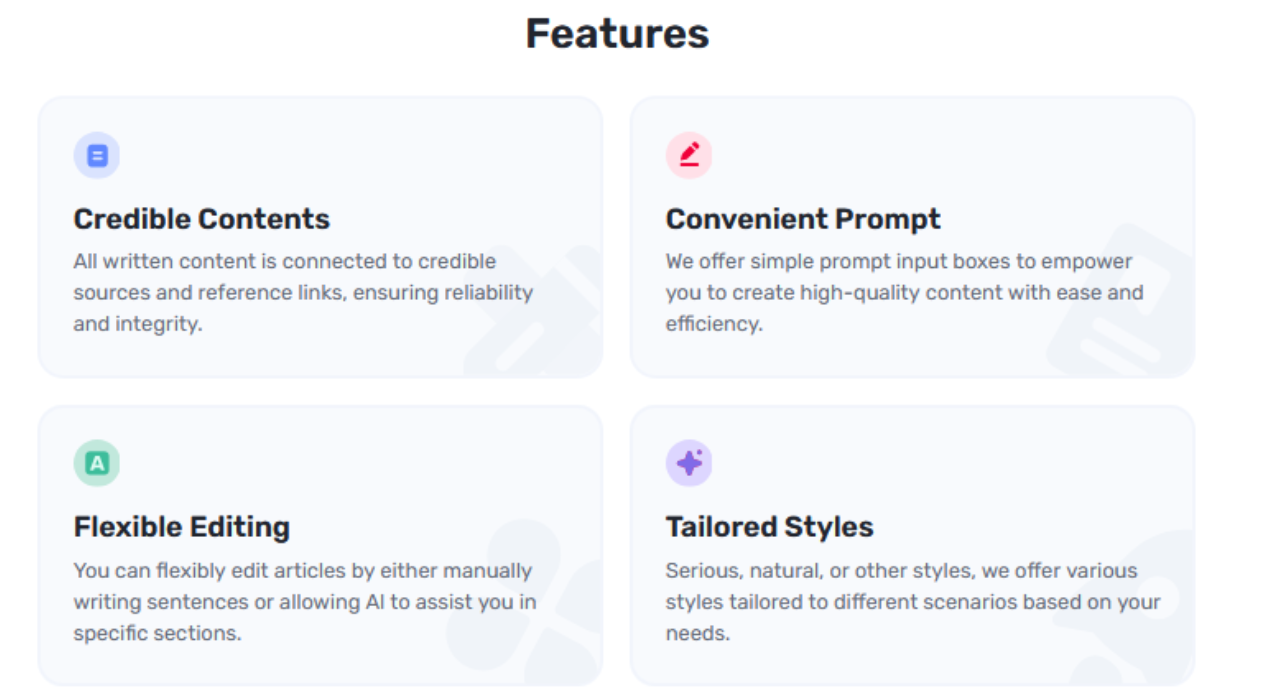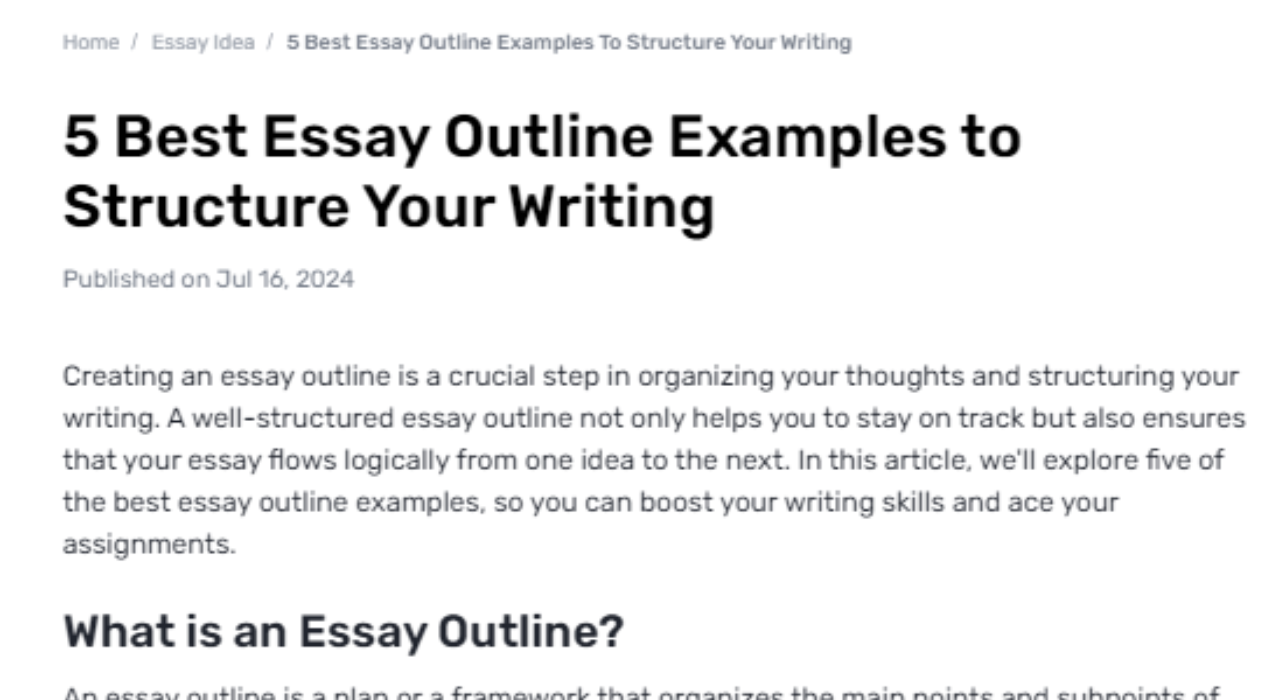The outline is among the best resources for structuring an essay. An efficient essay outline acts as a roadmap, guiding the writer through the most important details and guaranteeing that everything is covered. It permits the writer to efficiently create their contention, providing supporting proof and addressing counter arguments.
This organized approach not as it were rearranges the composing handle but also upgrades the clarity and coherence of the ultimate essay. In general, producing academic writing of the highest caliber requires a carefully thought-out arrangement.
Vital Additives of Successful Essay Outline
An excellent Essay Outline Examples need to consist of three main sections: a creation, frame paragraphs, and a conclusion. These components are important for preserving ideas in order, making sure the argument is coherent, and fortifying the thesis, all of which enhance the essay's overall excellent coherence.
Introduction
The introduction is the first area of any exposition, setting the stage for what is to come. In an essay outline, the introduction should include a few key components. The hook is a sentence or two planned to seize the reader's consideration. It can be an interesting fact, a quote, an address, or a brief account. The goal is to engage the reader right from the beginning. Taking after the hook, background data gives a setting for the topic. It might incorporate definitions, historical background, or a brief overview of the subject, helping the reader understand the significance and centrality of the essay's subject.
Body Paragraphs
The body of the exposition is where the main ideas are created and backed with proof. Each body section should center on a single point or contention that supports the thesis explanation. Each section should start with a point sentence that introduces the main idea of the section, acting as a mini-thesis that summarizes the point to be discussed. Following the topic sentence, the section ought to incorporate supporting proof, such as truths, insights, cites from specialists, illustrations, or accounts. After showing the proof, it is significant to clarify and analyze it. This area translates the proof, showing how it supports the subject sentence and connects to the thesis statement.
Counterarguments and Refutations
An effective essay often anticipates and addresses potential counterarguments. Including counterarguments and refutations in the outline illustrates basic consideration and reinforces the essay's general contention. A counterargument presents a contradicting perspective or complaint to most proposals. Counting counterarguments appears that the author has considered different viewpoints and isn't disregarding alternative views. Taking after the counterargument, the author ought to give a refutation, explaining why the counterargument is not as strong or substantial as the thesis. This may include displaying extra proof, highlighting logical flaws, or demonstrating the superiority of the first argument.
Conclusion
The conclusion is the final section of the essay and serves to summarize the most points and strengthen the thesis. An effective outline will detail the key components of a strong conclusion. The conclusion should begin by restating the proposition statement, but in different words, strengthening the most contention and reminding the peruser of the essay's reason. Next, the conclusion should briefly summarize the main focus examined in the body paragraphs. This makes a difference in fortifying the contention and guarantees that the peruser is cleared out with a clear understanding of the essay's key takeaways. The closing explanation is the ultimate opportunity to leave an enduring impression on the reader.
Extra Components
Breaking down each area of the essay into detailed subheadings can offer assistance organize the content further. Subheadings provide a clear outline for the essay, which helps the writer stay on task and the reader understand the argument. To help arrange ideas clearly and succinctly, utilize bullet points or numbers in the outline. This will make it easy to comprehend the exposition's structure quickly and ensure that no important points are missed.
How to Write Essays By Gauth
Gauth essay generation is a simplified procedure made to assist you in quickly writing essays that are organized and logical. Here's how to create an essay using Gauth:

Step 1: Choose a Topic for Your Essay
Start by asking a question or submitting your essay subject to Gauth. To guarantee correct and pertinent content creation, be as descriptive as you can. Your input will be analyzed by Gauth's sophisticated algorithms to determine the context and extent of your writing.
Step 2: Make an outline Using Gauth
Gauth will then produce a thorough essay outline for you. Important elements including the introduction, body paragraphs, and conclusion are included in this framework. The outline acts as a road map, taking you through the key ideas and making sure you've covered everything.
Step 3: Creation of Content
Once the plan is complete, Gauth will produce in-depth material for every segment. This entails creating captivating openings, refining claims using relevant data, and skillfully coming to a conclusion. The text that is created is precise, succinct, and related to the subject of your essay.
Step 4: Examine and Modify
Review the produced essay at the end. Make any required changes to the material to make it more individualized and to make sure it satisfies your needs. Gauth's tools also enable additional modification and improvement to produce a final polished article.
Final Words
Using a strong essay definition is necessary for writing an essay that is coherent, well-structured, and persuasive. Vital components like the creation, body paragraphs, rebuttals and counterarguments, and end are arranged in a manner that gives experience to readers and offers the author a clear direction.


